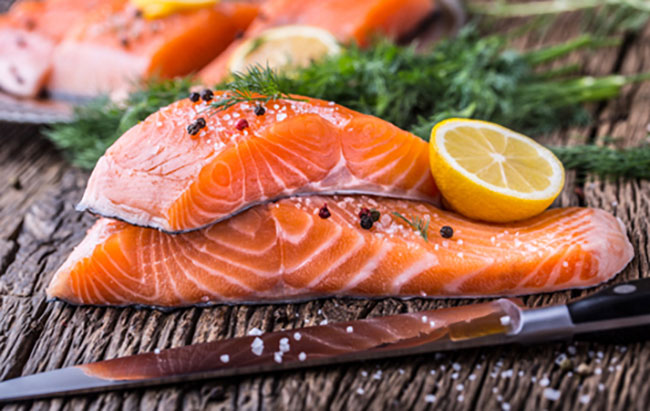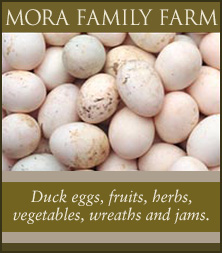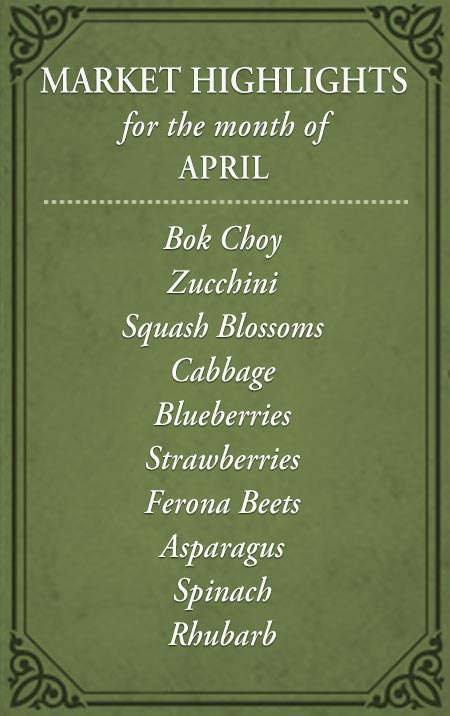Here are some easy tips for selecting fresh fish and cooking fish perfectly each time. According to Andrew Cohen, our market Chef in Residence, when cooking fish there are two important things to remember: (1) Fresh! and (2) “Eight minutes to the inch.”
How to Choose Fresh Fish
Always check fish for freshness. Smell the fish, look closely at it, and when buying whole fish, touch it. Fresh fish should smell like the sea, but never “fishy.” The flesh should be firm and the grain of the fish should be tight. If the flesh looks watery or desiccated, or if there is gapping in the grain, don’t buy it. Fish should be firm, not mushy. Fish are waterproof on the outside, not on the inside. Avoid fish that are ”top-iced” directly on the flesh. The ice can dent the flesh and the water will soak into the fish and make it soggy. When looking at a whole fish, the eyes should be firm, not shriveled. The gills should have a clean look to them, and when you gently feel the side of the fish it should spring back, not leave a dent.
Cooking Fish
When cooking fish, remember this mantra: “Eight minutes to the inch.” Whether cooking it on the stovetop, oven, poacher, or broiler, fish cooks up in eight minutes for each inch of thickness., roughly. Eight minutes for the first inch, then break it down from there. The average store-bought piece of salmon runs about 1 1/2 inches thick. This fish will take 12 minutes to cook. Fillet of sole usually runs around 1/4 – 1/2 inch thick. It might take only 6 minutes, but it will probably be closer to 8. Keep in mind that the thinner pieces of fish are more delicate, so you don’t want to cook them over high heat unless you want them to disintegrate in the pan.
Swordfish and tuna steaks are usually 1 inch thick, so cook for eight minutes. If you like your fish more well done, you may want to cook it a minute or two more. The eight-minute to the inch rule assumes an oven temperature of 400°F or pans over medium-high heat. If poaching, the liquid should be heated to a bare rolling simmer.
Here’s an example:
Seared Salmon with Salsa Verde
2 pieces of salmon fillet, 6 oz. each, skinned
A 10” pan heated over medium-high heat
Season the fish with salt and pepper, garlic powder if you wish (fresh garlic will burn–so if you use fresh, plan ahead– mince the garlic, rub it on the fish, then wipe off before cooking), and maybe a squeeze of lemon.
Lay the fish into the pan skin side up. Watch as the fish changes color where it is in contact with the pan. After 8 minutes, give the pan a gentle shake and nudge the fish with a thin-bladed spatula. It should slide loose. Turn the fish over, and cook it 4 minutes more. The fish is now done. Plate and top with salsa verde.
You could also cook the fish for 4 minutes in the pan and then transfer the pan to the pre-heated 400° for 8 minutes more without turning the fish. This is my preferred salmon method. It yields a crackling crisp top and the flesh is tender. Still – 8 minutes to the inch.
Give this method a try. Remember that this is a guideline rather than a law. Be flexible; pay close attention the first few times, and then this technique will become second nature to you.




























